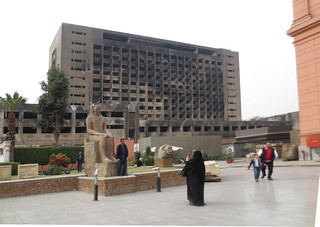
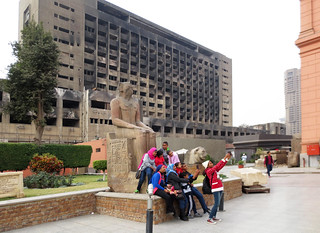
These young visitors were well equipped for a selfie with a phone-on-a-stick.
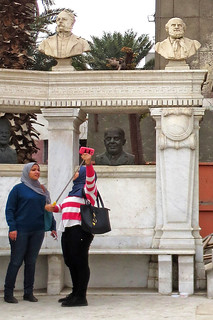
Now, you might be wondering, "what on earth is that burnt out building in the background of the top two pictures?"
This is what remains of the headquarters of deposed president Hosni Mubarak's National Democratic Party, set on fire during the revolution. Four years later, it is now the only sign of that tumultuous time in Tahrir Square. But it is not going to be there much longer. According to this article in the U.K Guardian about the effort underway to refurbish the museum:
Under the plans, the building will be refurbished and next door, Hosni Mubarak’s burnt-out political headquarters will be knocked down and turned into a garden.I looked for a pre-revolution picture with the building in better condition and could only find this from 2006:
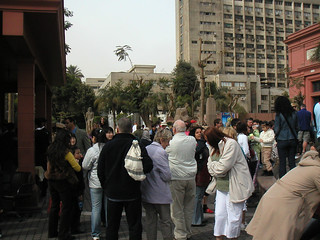
In a way, that burned out building and the fractured face of Ramses II come together to symbolize Egyptian history over the past several thousand years:

Immediately adjacent to the old burned out building, there is a monument to Auguste Mariette, the French Egyptologist credited with founding the museum. His statue stands atop his tomb and is surrounded by busts of other famous Egyptologists. The Wikipedia article about Mariette concludes with this note about the rivalry between the French and English for control of Egypt's historical artifacts:
By the spring of 1881, prematurely aged and nearly blind, Mariette arranged for the appointment of the Frenchman Gaston Maspero (a linguist rather than an archaeologist, who he had met at the Exposition in 1867), to ensure that France retained its supremacy in Egyptology in Egypt, rather than an Englishman. At this time, the English comprised the majority of Egyptologists in Egypt.
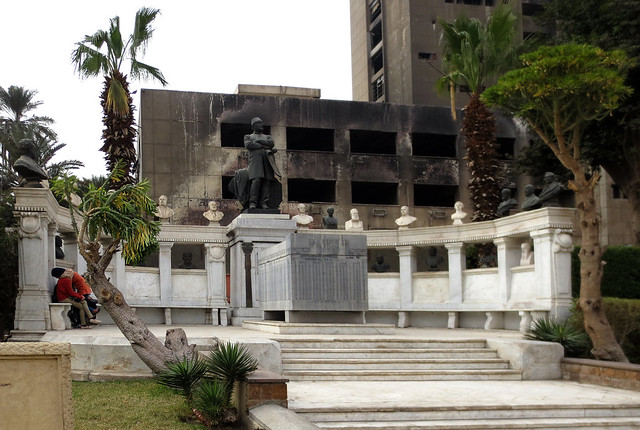
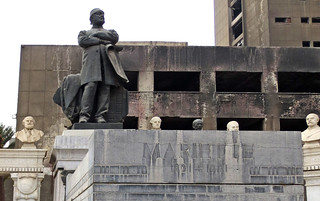
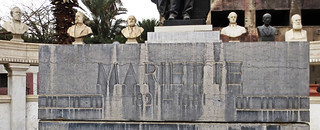
Tourists leaving the museum grounds are always viewed as prospective customers for guides, would-be guides and the ever-present entrepreneurial merchants of Cairo. Without me ever saying a word, the price on papyrus paintings dropped from "three for $10" to "five for 10?" as I took these pictures. I didn't buy any. We already have too many. If you'd like one, come to our Bloomington residence and you can have your choice.







No comments:
Post a Comment